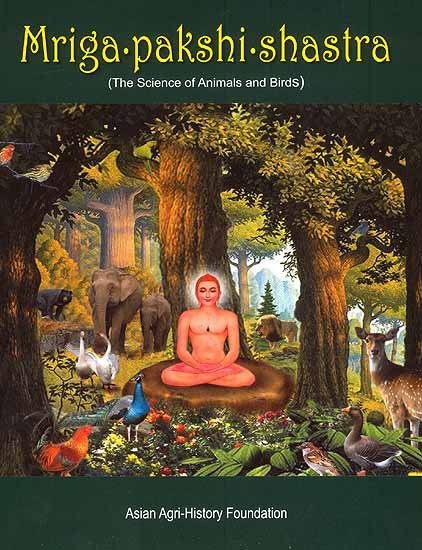Animal Kingdom (Tiryak) in Epics
by Saranya P.S | 2019 | 51,616 words | ISBN-10: 8190396315 | ISBN-13: 9788190396318
An English study the Animal Kingdom (Tiryak) in Epics.—The present thesis is based entirely on Ramayana and Mahabharata although an attempt is made to analytically compare the Animal kingdom with Mriga-pakshi-shastra—‘The ancient Indian science of of Animals and Birds’....
Chapter 1.13 - Special features of Animals and Birds
VedaVyasa had closely observed animals and birds and he had written down their genetic and individual features. A tortoise enlarges and contracts its head as it needs. Although fishes and water insects live together they are quite different from one another. Some birds that move in water don’t get drenched although they are in water. It is because there is some kind of oil in their feathers. Therefore water does not stick to the feathers. (In the same way, a free soul, even as it is in the universe, does not get affected by the virtues or vices of the world.)
In Mahabharata we see statements about the conception of mules. Bhishma says: “Any king who does not destroy the adversary who has been defeated is inviting his own ruin.” In the same way, the mule conceives its own death. Modern knowledge speaks of mules as barren. Therefore they can’t conceive. It has therefore become necessary to find the stories behind the truths mentioned in Mahabharata. New things are coming up every day as the result of new efforts and new working. A day may soon come when even mules can conceive and give birth to its young.
From Mahabharata we also come to know that animals and birds had the capacity to communicate with one another. In the Shantiparvan, there is the dialogue between a dove and its virgin bride. Groups of ascetics went to and talked with an ascetic who was in the guise of birds and sitting on a spear. In one place it is written like this: When a crow eats food, it makes the ‘caw-caw’ sound telling other crows that food is available there. All these observations in the Mahabharata are made clearer by the findings of modern science.
From Mahabharata we get important information about insects and butterflies and even very minute creatures. We learn about serpents that move about with the force of their bellies. According to the information given in the Mahabharata, silkworms make cages from the thread coming from their bodies and enclose themselves as cocoons. This is known by everybody now and there is nothing controversial about it. Silk worms produce silk from their own bodies and cover themselves with blankets made from their own silk. To get this silk, people kill the worms and take the silk. Similarly, spiders also weave webs from the gossamer that comes from their bodies. In Shantiparvan, regarding non-violence it is said like this: “In this universe there are creatures of all sorts, some so small that they are not even visible to the eye. Some of them lose their lives because of our touch and even by our shadows.”
In Adiparvan we can get a lot of details regarding serpents. Some 171 kinds of serpents are detailed here. Serpents belonging to various classes and sub classes were given as burnt offerings in the “Sarpasatra” of Janamejaya. The babies of these serpents and their litter were offered to the deities in the snake inns of Janamejaya. The specialties of some of these snakes are as under: Some have three heads; some have seven and some have even ten. Their poison was similar to the fire during the time of the deluge. Their bodies were broad like the high mountains. Their speed was mind-boggling. Their size was two or three yojanas. They had the capacity to change their shape and test their strength. They all were so terribly venomous like the burning fire.”
In Mahabharata there are descriptions about the two tongues of serpents. Some of them are merely beautiful myths. There are also stories about how serpents got such venom in them and about their shedding the skin. Apart from the birds and animals seen on earth there are also descriptions regarding many fine, minute creatures that dwell in the atmosphere.
